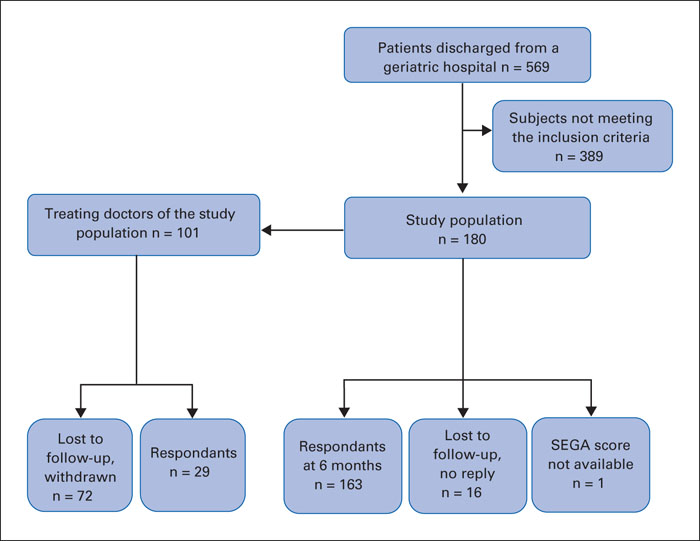Gériatrie et Psychologie Neuropsychiatrie du Vieillissement
MENUPredictive capacity of the modified SEGA frailty scale upon discharge from geriatric hospitalisation: a six-month prospective study Volume 18, issue 1, Mars 2020
- Key words: elderly, frailty, SEGA, primary care, prevention
- DOI : 10.1684/pnv.2020.0856
- Page(s) : 34-41
- Published in: 2020
The aim of this study was to describe the predictive role of the modified SEGA frailty scale on nursing home admission, readmission to hospital, falls and mortality. Material and methods: We performed a prospective, single-centre cohort study in patients discharged from a geriatric hospital ward between July 2016 and February 2017, with follow-up of six months. Patients aged 65 and over who were returning home from hospital were included. The primary outcome measure was admission to a nursing home at six months. We used a Cox model to explore the predictive nature of the variables. Results: Thirty-three patients (18.4%) with a mean age of 80.9 years (± 6.5) were classified as not very frail and 146 (81.6%) with a mean age of 86 years (± 6.5) as frail/very frail. After six months, 13.5% of the frail/very frail patients and 1.2% of the not very frail patients had entered a nursing home (p = 0.169). Frailty status was significantly associated with readmission to hospital at three months (p = 0.026) and single or multiple falls at six months (p = 0.003). Conclusion: The modified SEGA scale may predict the occurrence of adverse events and improve the transition to home.


